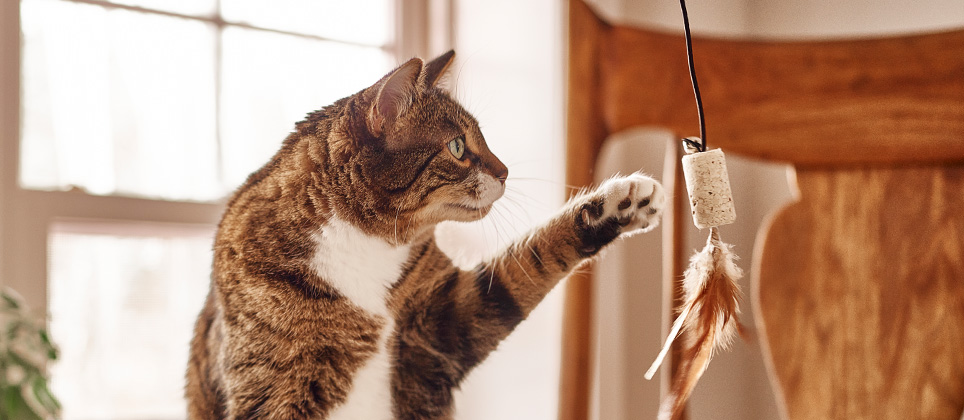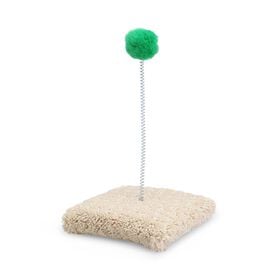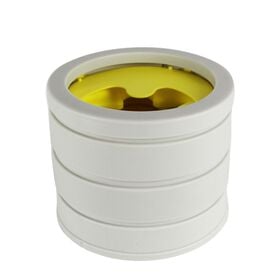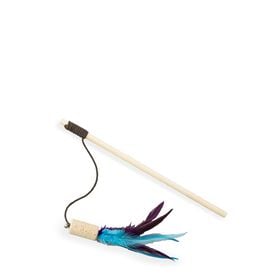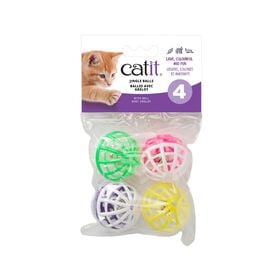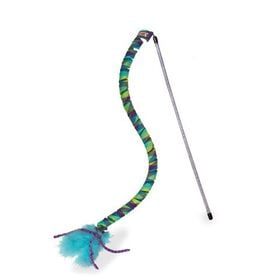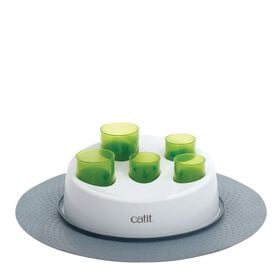Play is an important part of your cat’s life. The more physically and mentally active your pet is, the less likely it is to get into trouble.
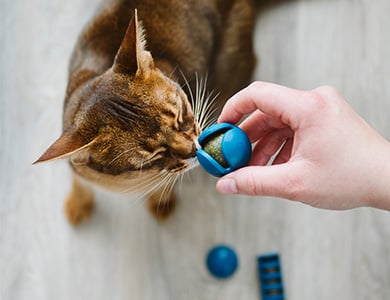
In kittens, play is used to develop motor, social and physical skills, manage emotions, and much more. If you don’t play with your cat enough once it reaches adult age, it may spend that unused energy elsewhere. Since cats are creative enough to invent their own activities, they can amuse themselves unrolling toilet paper, eating plants (learn about toxic plants) or chewing on wires. These types of behaviours indicate that a cat has found alternative ways to keep busy.
Free play
The first type of toy to leave permanently at your cat’s disposal is a free-standing toy. These small items can be scattered randomly around the cat’s environment. They are generally inexpensive and provide a source of entertainment. The toys must be light enough so that batting at them causes movement that catches the cat’s attention. Playing with the toys must not require too much effort.
To hold your cat’s interest, it is recommended that you have two sets of toys that you alternate on a weekly basis. This way, the cat will have new items to discover in its surroundings every week. These toys make for a fun pastime that won’t deplete the cat’s energy.
Structured play
Structured play is essential. In addition to being a good way to maintain a strong rapport with your cat, it allows you and the cat to spend quality time together. If you have several cats, plan for structured play as a group, unless one of the cats constantly appropriates the toy that you have out. If that is the case, it is best to play with your cats separately, or to have them expend their energy before engaging in group play.
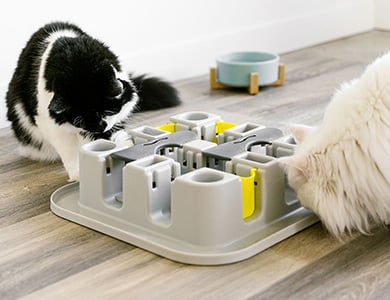
Structured play techniques involving a stick
The aim is to use a stick to imitate the movements of prey, such as birds, snakes and insects.
- Begin a session by creating anticipation in your cat with random and stealthy movements. Start far away from the cat and come gradually closer, pausing on surfaces such as a wall, ceiling or chair, always keeping in mind the prey that you are trying to imitate.
- During the session, it is important to let the cat catch the toy about one time out of three. Let the cat catch the toy randomly, since it could get bored with always catching its prey on the third try.
- Also, to add an element of realism to the activity, remember that prey that has been caught should remain still for a short time before escaping at the right time. The toy on a stick can free itself from the cat's grip and move in random ways.
- To ensure that your cat makes a sustained physical effort, start the session with energetic prey that moves quickly over long distances and end by gradually decreasing the intensity, as though the prey were tired. Once the game is over, put the stick away, out of the cat’s reach, to keep the cat interested.
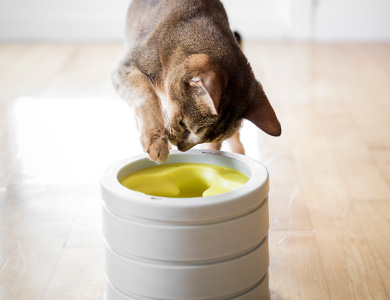
Is your cat interested?
Many people find that their cat has no interest in free-standing toys or structured play. Often, the key is finding what interests the cat in order to stimulate it. It is also important to know that some cats prefer certain types of prey (e.g., snakes, birds, mice) that move in different ways. It is up to you to provide your cat with a variety of toys to choose from.
A cat that is unable to catch a toy that is presented too quickly or predictably can lose interest. Similarly, a cat may not be drawn to an unfamiliar toy that is too noisy or too big. The cat may be more scared of the toy and less tempted to chase it. Let your cat sniff and become familiar with any new toy while it is immobile. Then, you can think about adding movement. It is often a good idea to decrease the level of difficulty for a cat with limited interest, so that it can get better at catching the toy instead of repeatedly failing to do so.
You can also take advantage of times when the cat is more active, such as before mealtimes, and introduce play as part of a routine. That way, you won’t catch a sleepy cat that’s not prepared for action off guard. Instead, your cat will be ready for play time.
Your cat is not an Olympic athlete
Since structured play sessions with interactive sticks require your pet’s sustained physical effort, make sure the sessions last no more than 10 minutes and repeat them no more than 2 or 3 times a day. It is not recommended that intense levels of activity last for hours, which can build up your cat’s endurance and leave it tireless.
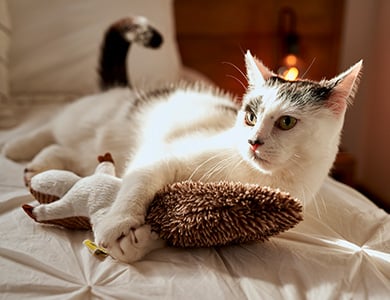
Cats are sprinters. It is therefore preferable to start with sessions involving quicker movements over longer distances and to gradually decrease the intensity before ending the game. A cat will usually show signs of fatigue, an indication that play is almost over. A cat that lies on its sternum, in a crouching position on its front elbows, with back legs stretched out to the side, or on its hip, is tired. You should think about wrapping up play time.
Pay special attention to kittens and more active cats. If they are panting, the game was probably too intense or too long. Don’t wait until they are out of breath. Stop before you see any of these signs.
Your cat likes variety
There are several ways to keep cats busy and provide them with a stimulating environment in which they can expend physical and mental energy. Training your cat or setting up interactive bowls, cat trees and 3-D living spaces with access to windows and high observation areas are just a few ways of keeping cats well balanced and happy. Catnip is also effective for about 70% of cats.
Have fun!
